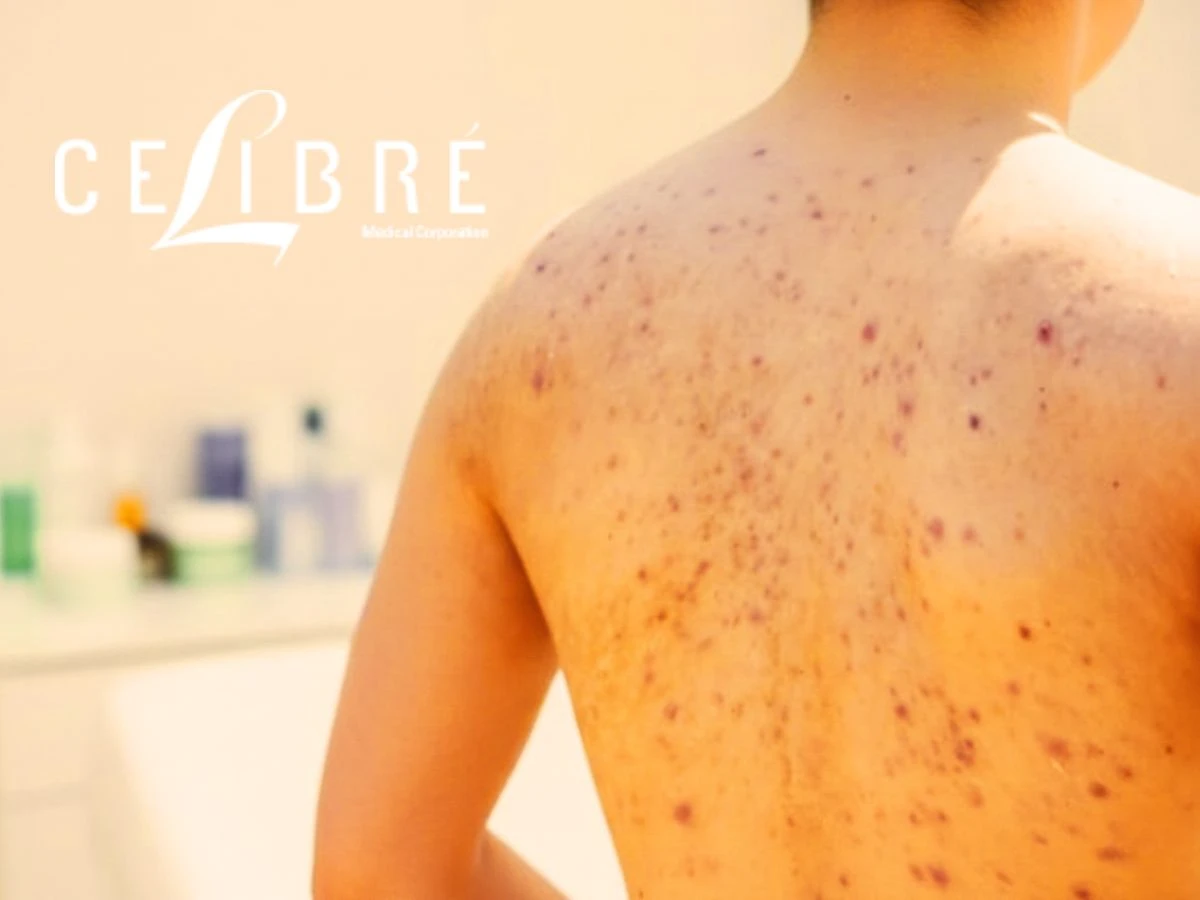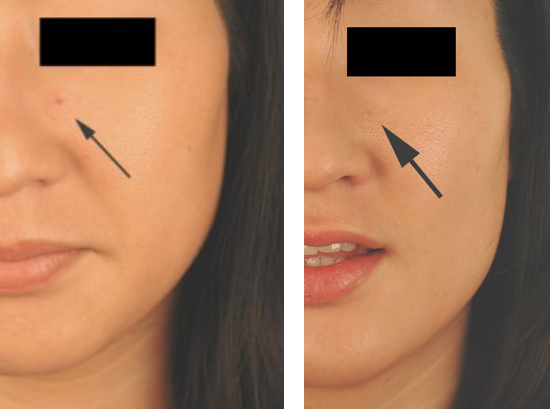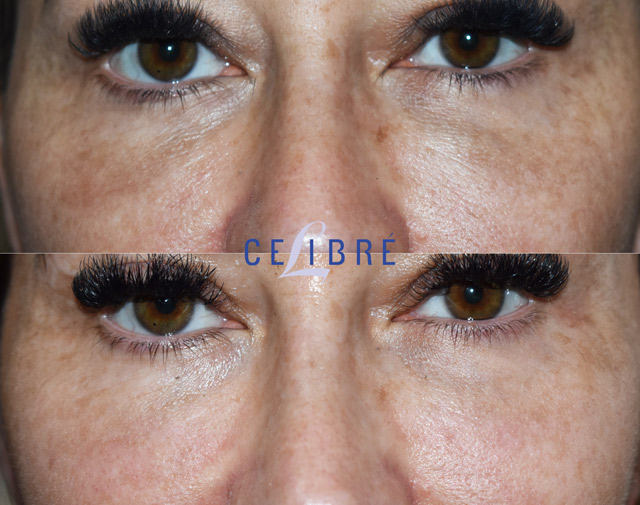How to Remove Brown Spots on Face?

Brown spots on the face are a common concern that many of our patients notice as they age or spend time in the sun. The skin develops spots with prolonged sun exposure and aging. Many of these spots do not pose a health concern but they may affect how you feel your skin and appearance. […]
How to Get Rid of Dark Spots on Body?

Dark spots on the body are a common concern for many of our patients. The skin develops these spots – hyperpigmentation, sunspots or age spots – over time, and they can be present on any part of the body including arms, legs, back or chest. The spots are often harmless sun damage, but they create […]
What Gets Rid of Acne Scars: Treatments and Products

Acne scars are a concerning after-effect of past acne breakouts. Our patients seek effective products and treatments for improving their acne scars. Acne scars exist in various forms such as surface indentations, pinpoint holes as well as red and brown discoloration. Suitable treatment methods depend on your skin and scar type. Acne Scars Overview Skin […]
What is Rosacea?

Do you notice persistent redness, irritation, flaking, or acne-like bumps on your face that won’t go away even past your mid-twenties? You may be dealing with rosacea. While it’s often recognized by facial redness, this chronic skin condition can also cause discomfort, sensitivity, and breakouts that resemble acne. Unfortunately, rosacea has no known cure. However, […]
Can Teeth Grinding Cause Migraines?

If you’ve ever wondered, “Can teeth grinding cause migraines?”—the answer is yes, it can. Many people don’t realize that chronic jaw tension and clenching, also known as bruxism, can trigger migraines, headaches, and even neck or shoulder pain. When I meet patients seeking injections like Dysport, Botox, or fillers, I always look for signs of […]
What is Melasma?

While it may sound like a fancy, unusual word, melasma is a very common skin condition. You might have noticed dark brown patches on your cheeks, forehead, or upper lip—maybe even thought it was just your skin reacting to the sun. These patches often appear suddenly—during pregnancy, while taking birth control, or even after a […]
What is Hyaluronidase?

If you’re unhappy with your recent cosmetic injections of dermal fillers like Juvederm or Restylane, you don’t have to live with the results. Hyaluronidase injection is a fast, effective, and minimally invasive way to dissolve unwanted hyaluronic acid fillers, giving you control over your appearance again. Many patients see noticeable improvement within 1 to 2 […]
How to Prevent Skin Tags (and What to Do If You Already Have Them)

If you’ve ever noticed a small, soft bump on your neck, underarm, or groin area, you’re not alone. These little growths—often called skin tags—are incredibly common. Medically, they’re known as acrochordons, fibroepithelial polyps, or papillomas, but don’t let those fancy names fool you. They’re harmless, skin-colored bits of tissue that can appear on anyone. Skin […]
Why Am I Getting Cherry Hemangiomas?

If you’ve noticed small red bumps on your chest, neck, or back, you might be wondering what they are. Most likely, these are cherry hemangiomas, harmless growths of blood vessels in the skin. While they are not dangerous, many people choose to remove cherry angioma for cosmetic reasons. Why Cherry Hemangiomas Appear Cherry hemangiomas can […]
What Is The Best Treatment For Wrinkles Around The Eyes?

We get asked this question all the time and there is no one single answer. One of the follow up questions we ask is “Which wrinkles?” Is it the crow’s feet on the sides of the eyes that wrinkle up during the smile? Is it the frown lines between the eyes that appear when frowning […]
What is a Tyndall Effect from Dermal Filler Injections?

When Under-Eye Fillers Don’t Look Right: Bluish or Greyish Discoloration You finally did it! You went and got Restylane or Juvederm injections for tiredness under your eyes that has been driving you crazy. But after a few days, you notice something that doesn’t look quite right. A bluish or greyish discoloration is visible at the […]
What is Post Inflammatory Hyperpigmentation?

If you’ve been diagnosed with post inflammatory hyperpigmentation (PIH), or you have a dark mark on the body related to a previous injury, then this page is for you. PIH is a very common condition that differs from other pigmentation problems like melasma and sun spots. What is Post Inflammatory Hyperpigmentation and What Causes It? […]
Syringomas removal with Cauterization

Syringomas are small, non-cancerous growths that most commonly appear on the lower eyelids and upper cheeks. They are more frequently seen in women than men, and are particularly common among Asian women. While harmless, syringomas can be cosmetically undesirable, especially when they appear on the delicate skin around the eyes. You might think removing them […]
Permanent Bruise Discoloration & Hemosiderin Staining: Effective Treatment Options

What is Hemosiderin Staining? We’ve all had a bad bruise at one time or another. You know the kind. Deep, dark purple that fades to varying shades of blue, green and yellow (slowly) over a period of weeks until it’s gone. If you’ve had a deep bruise that left a brown spot after it resolved, […]
Hemosiderin Staining Under Eye: How to Remove Dark Discoloration

What Is Hemosiderin Staining and How Does It Occur? Do you have hemosiderin staining? Some people who suffer with it may not even realize what it is. Hemosiderin staining is an infrequent, but long-term side effect that’s usually caused by cosmetic procedures such as dermal filler injections, sclerotherapy (for leg veins) and eyelid surgery. How […]
